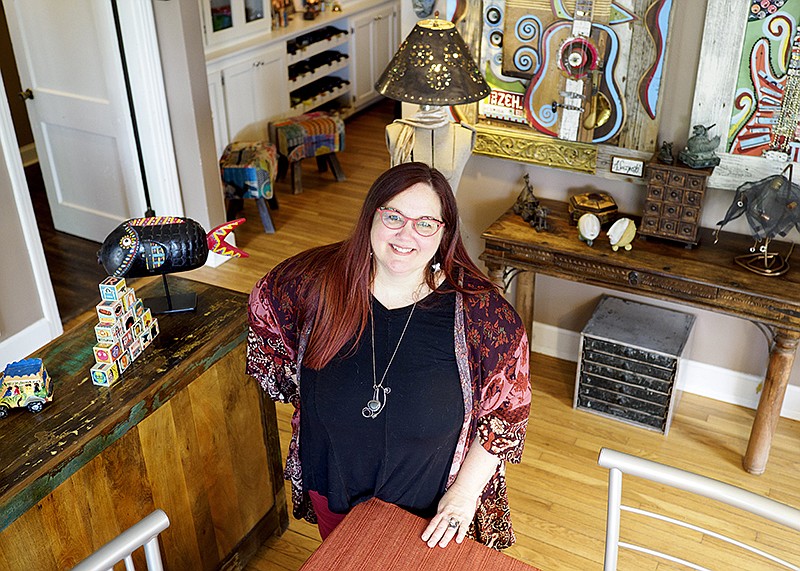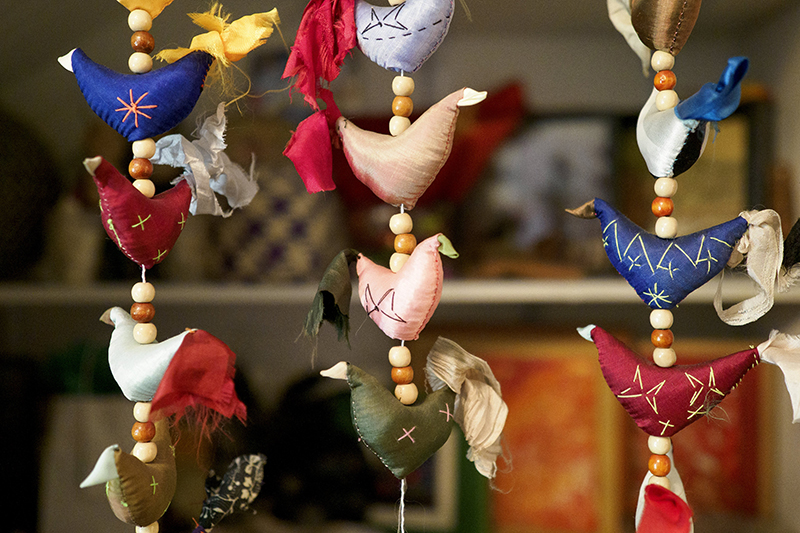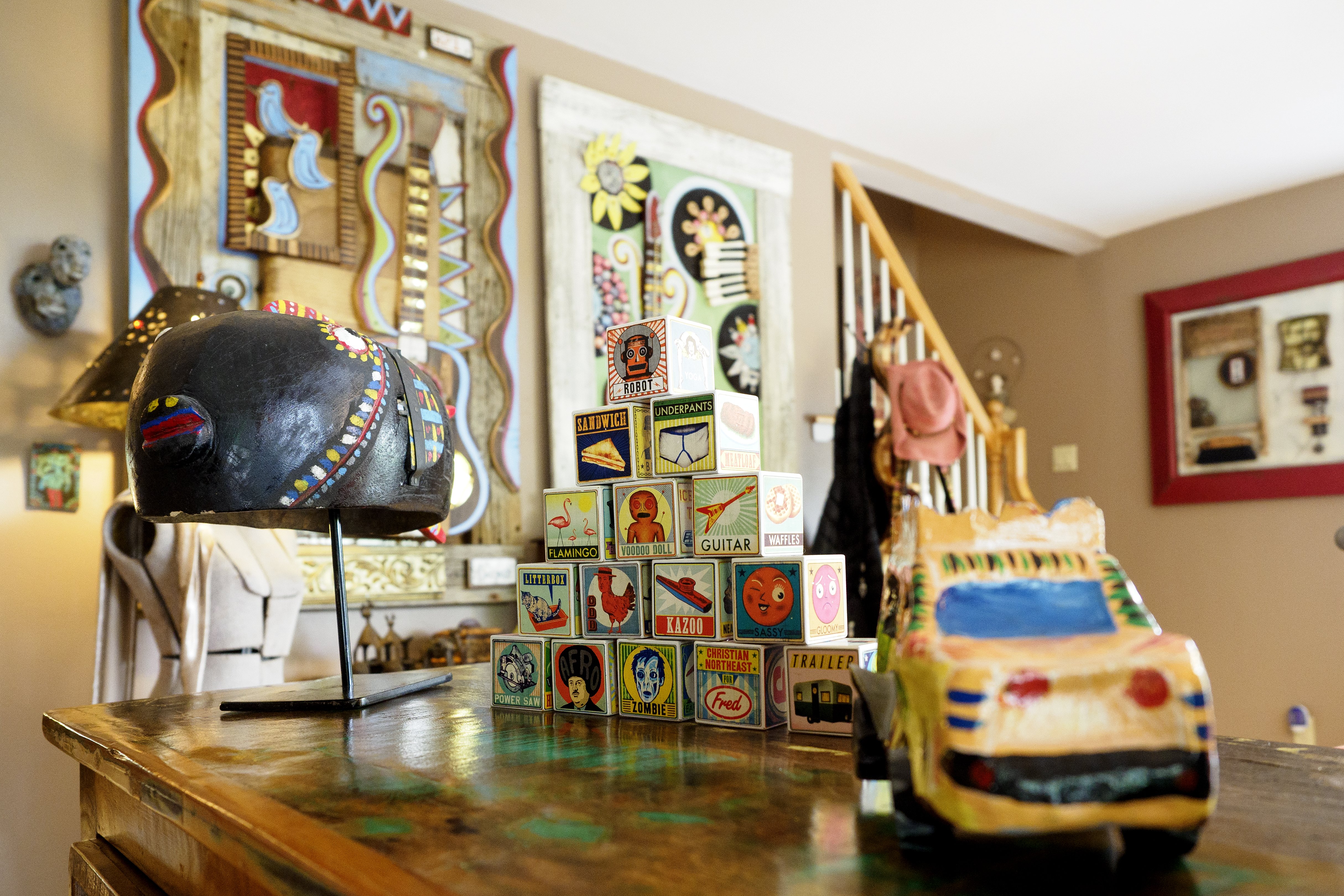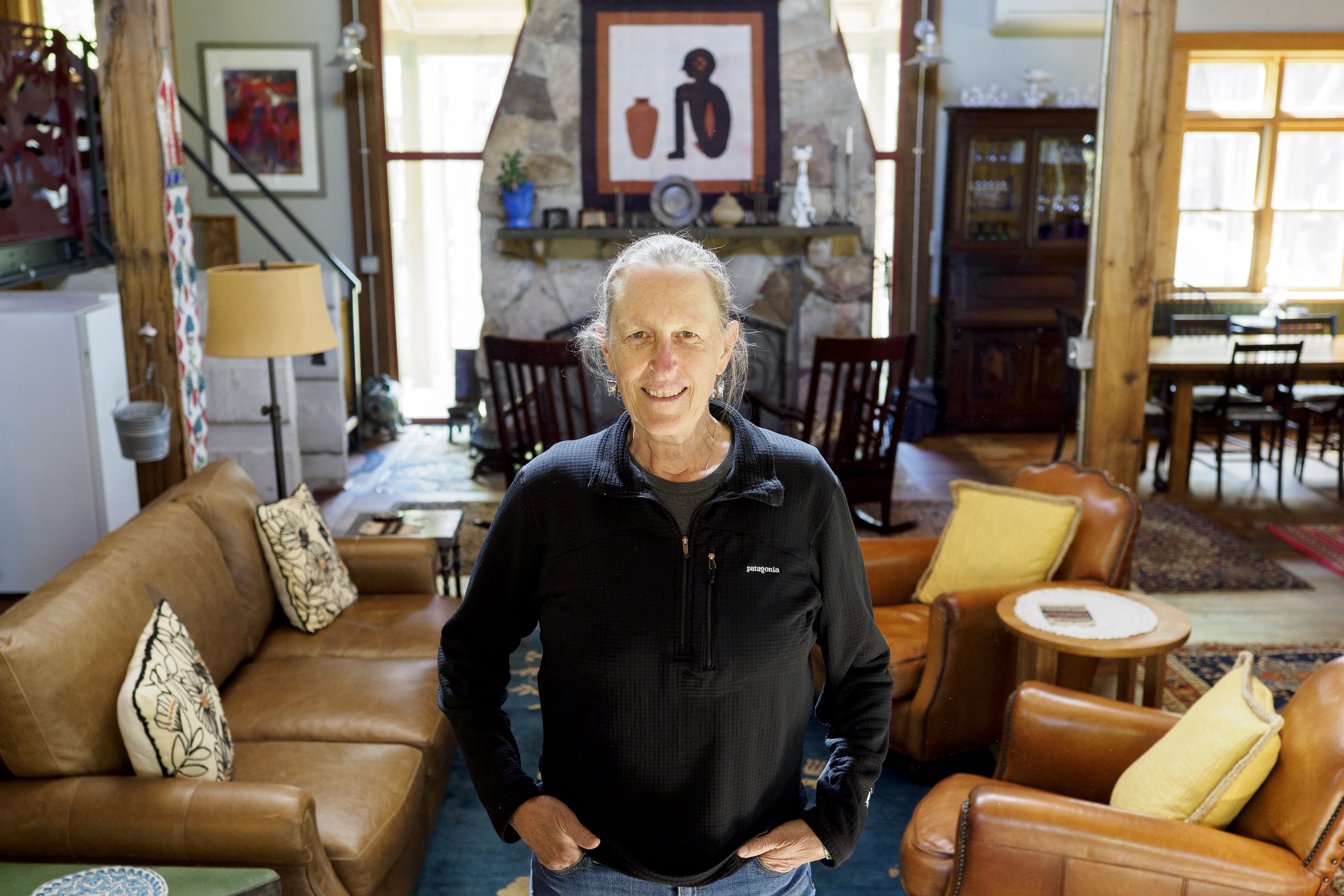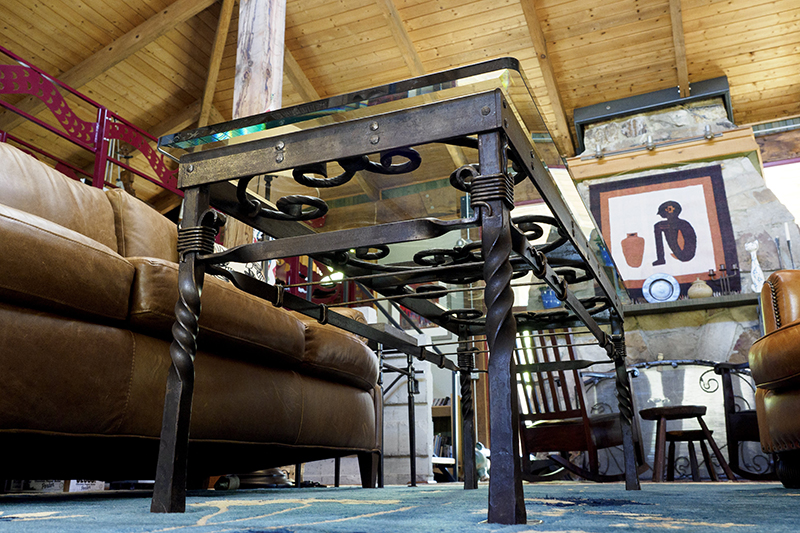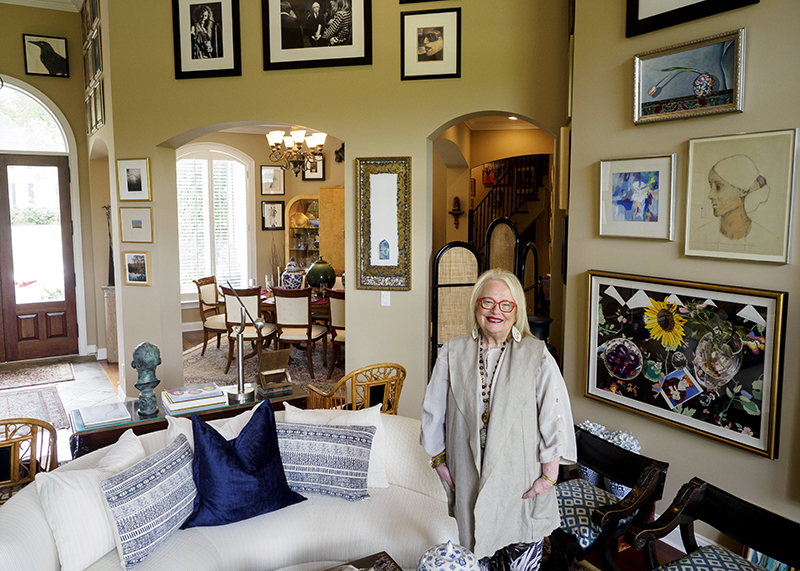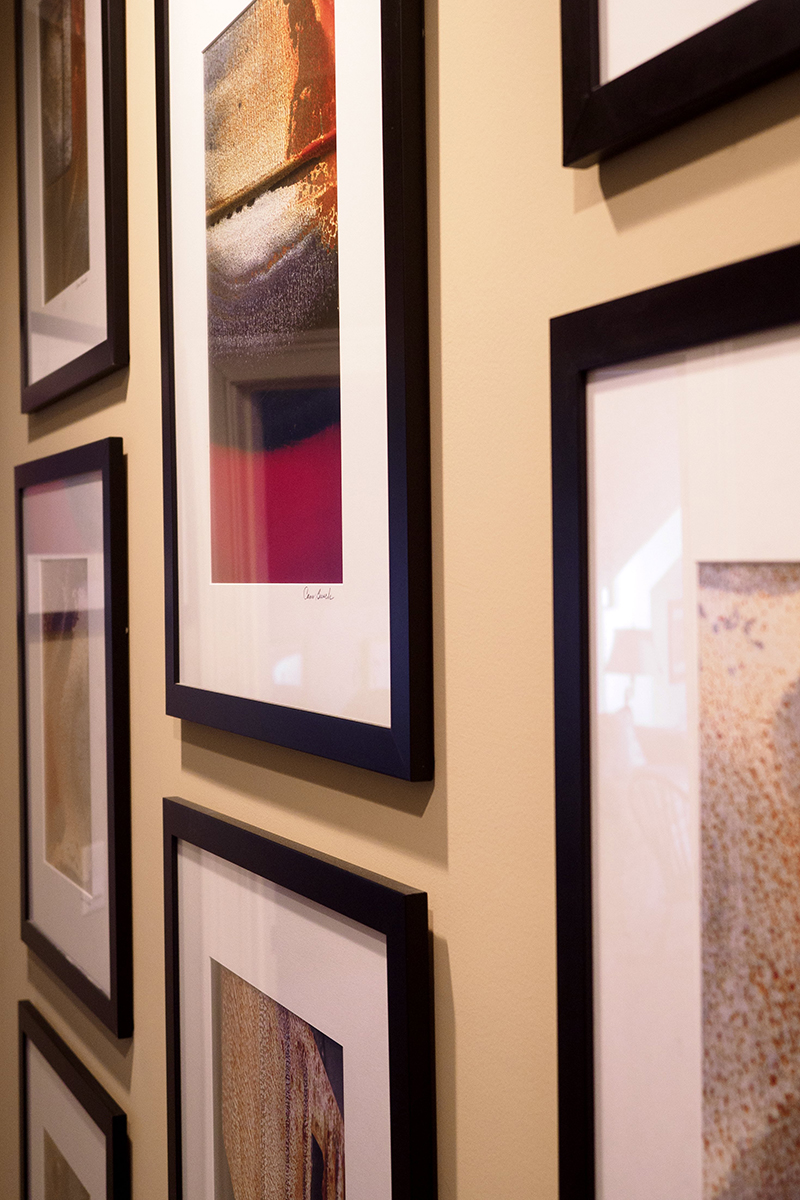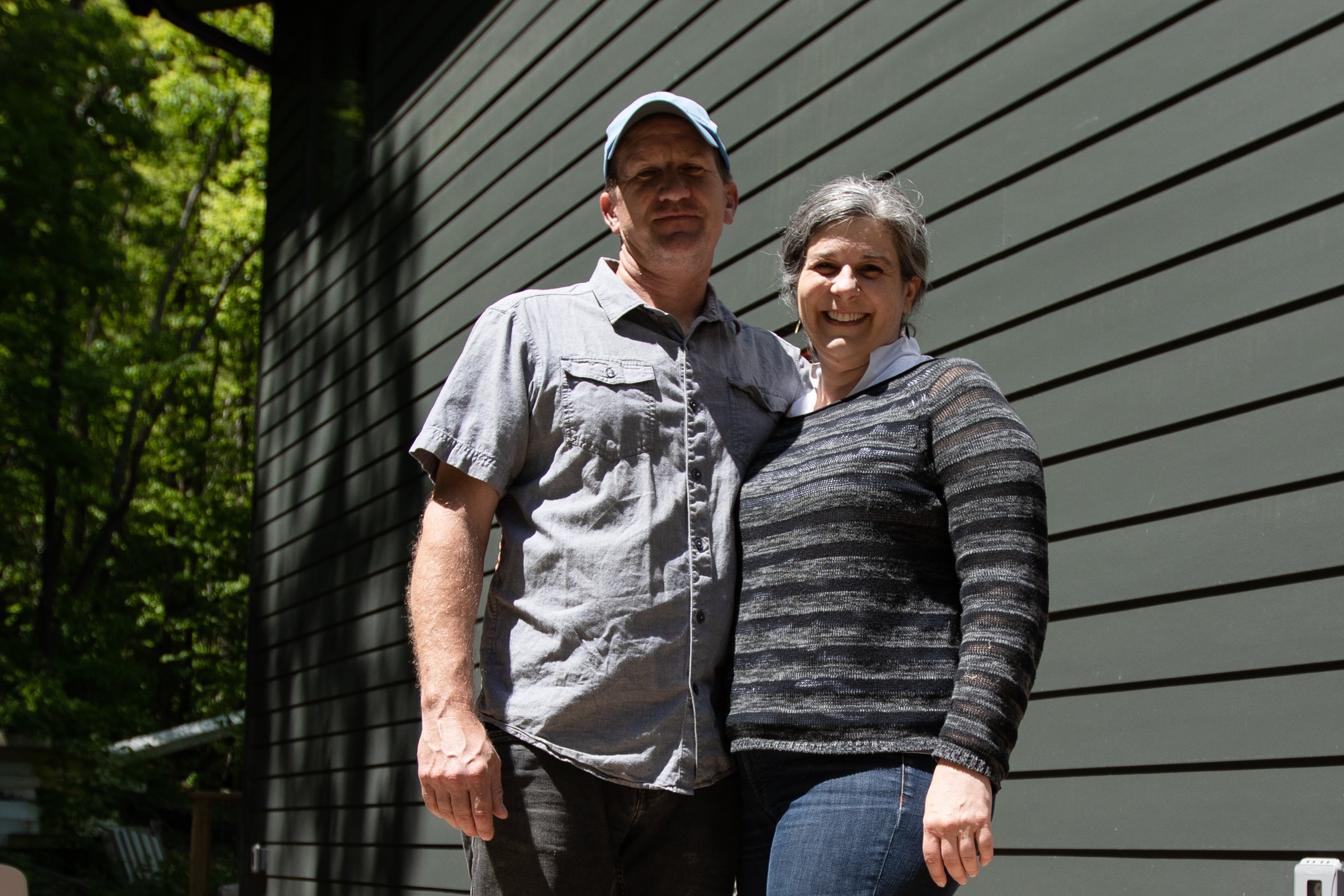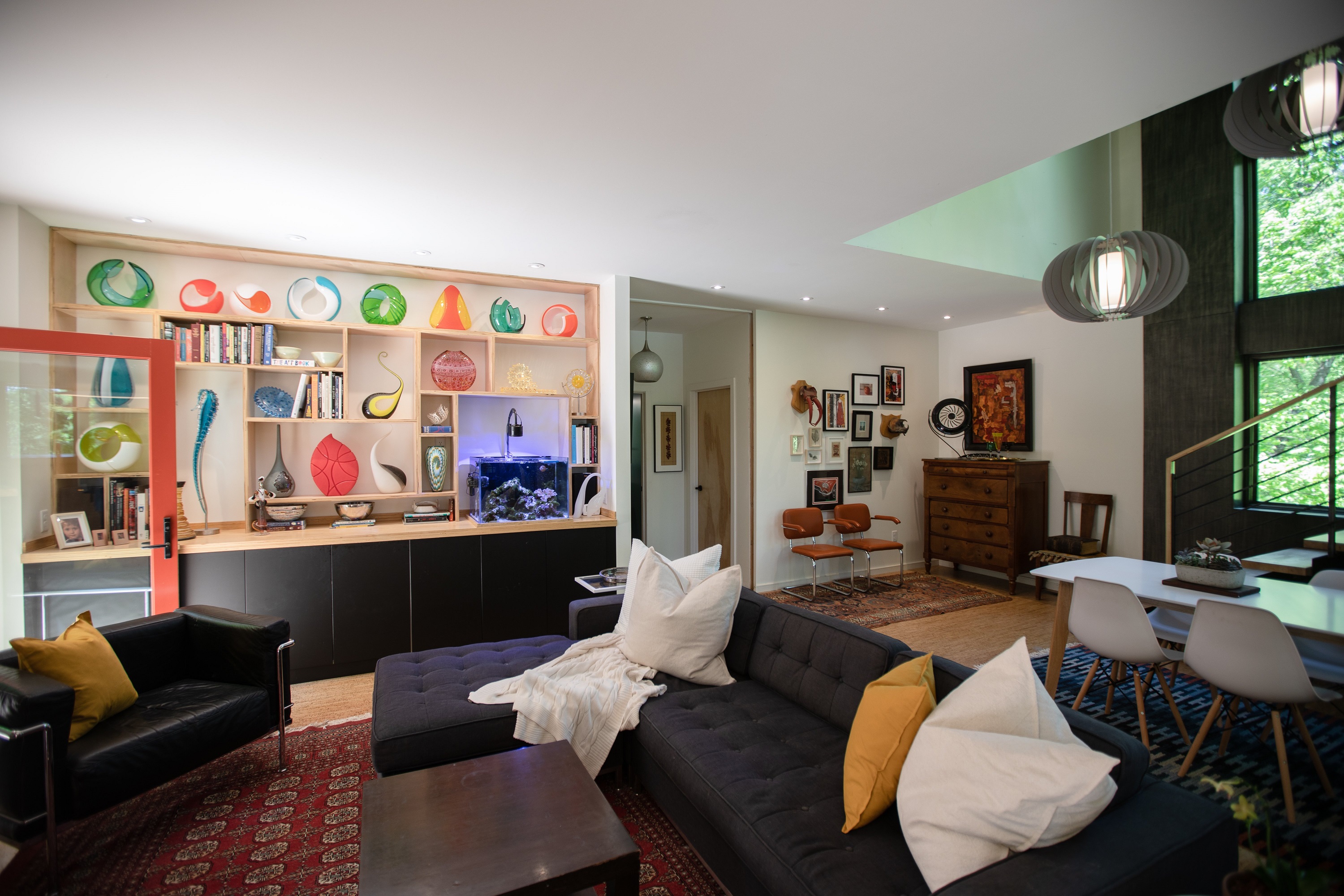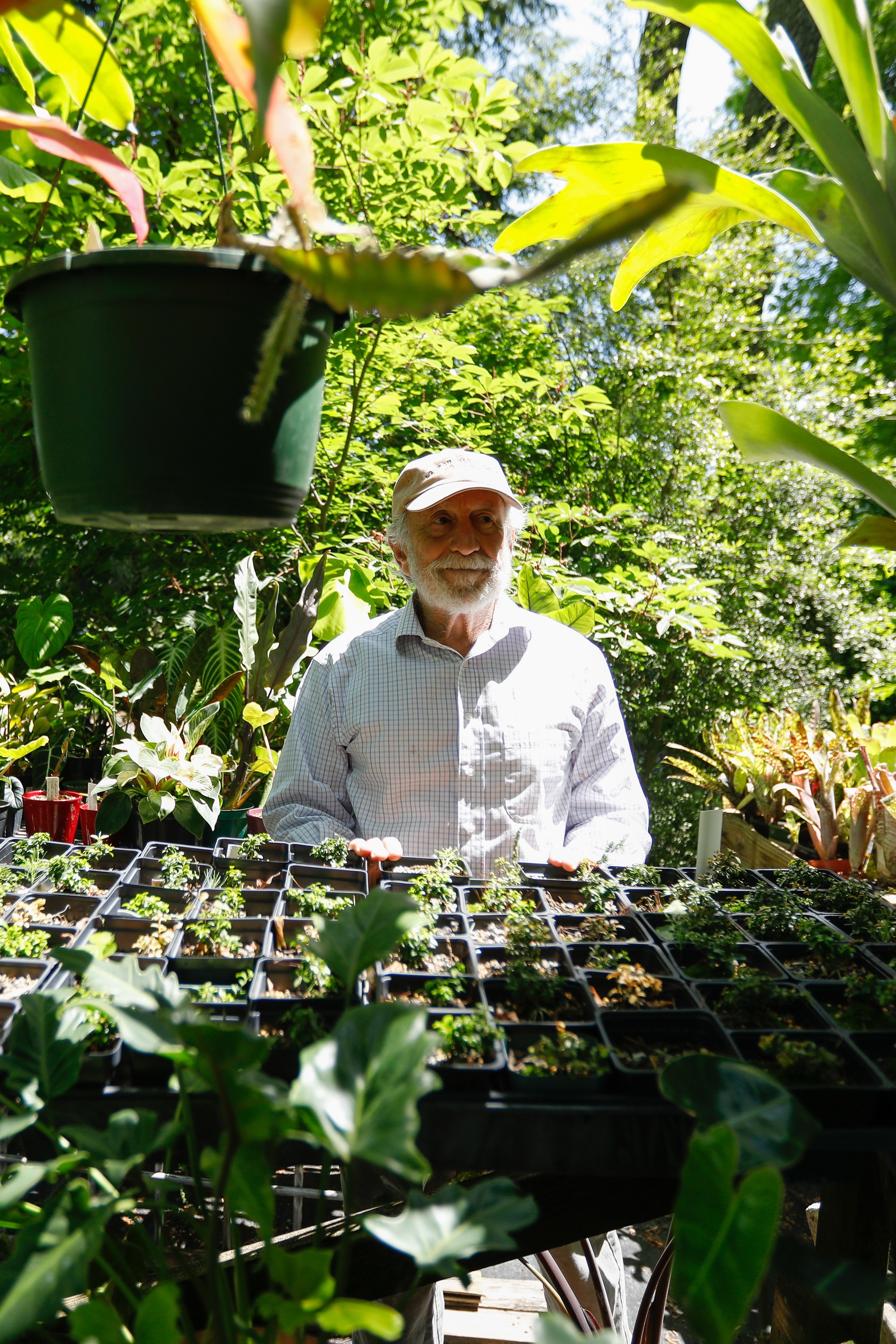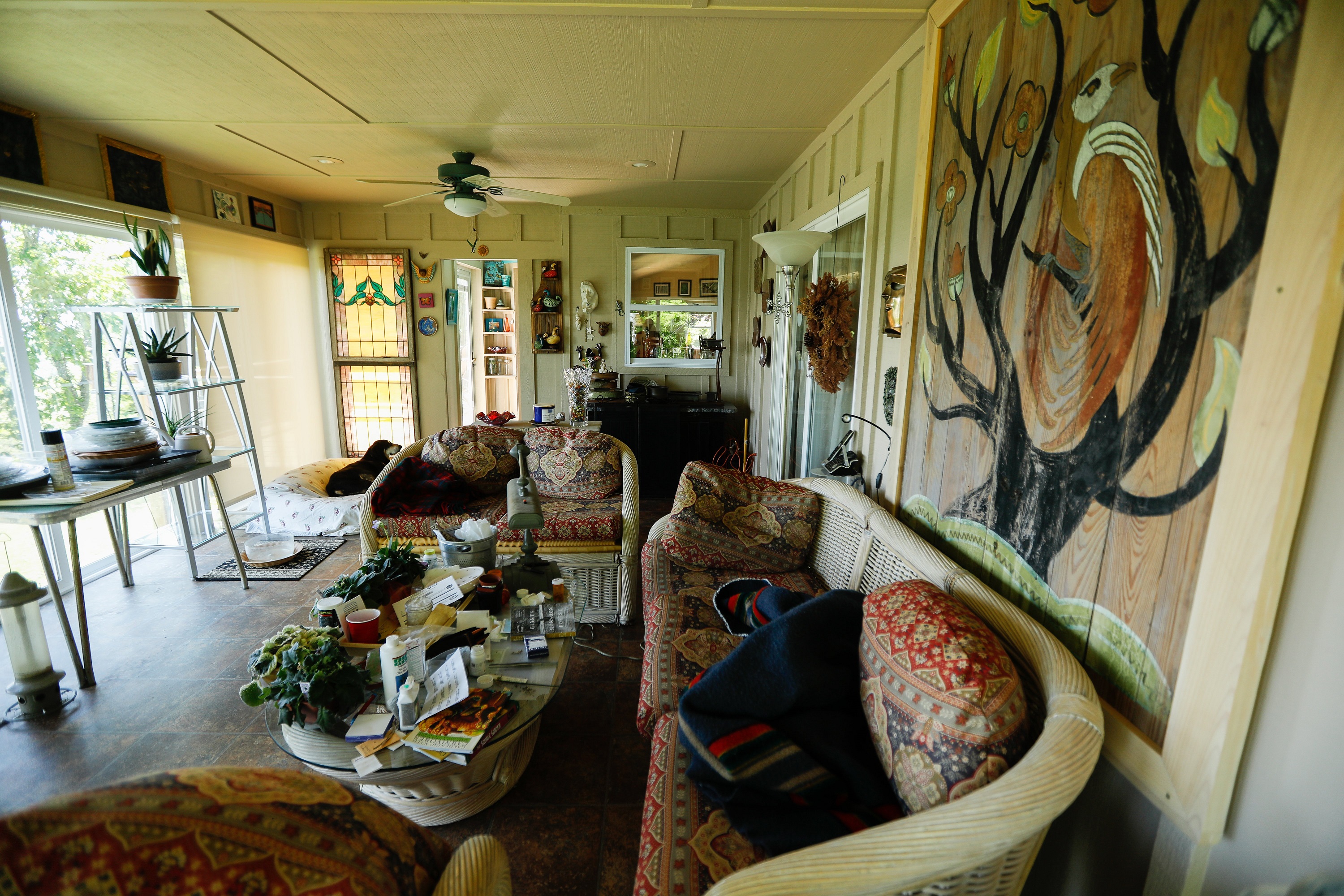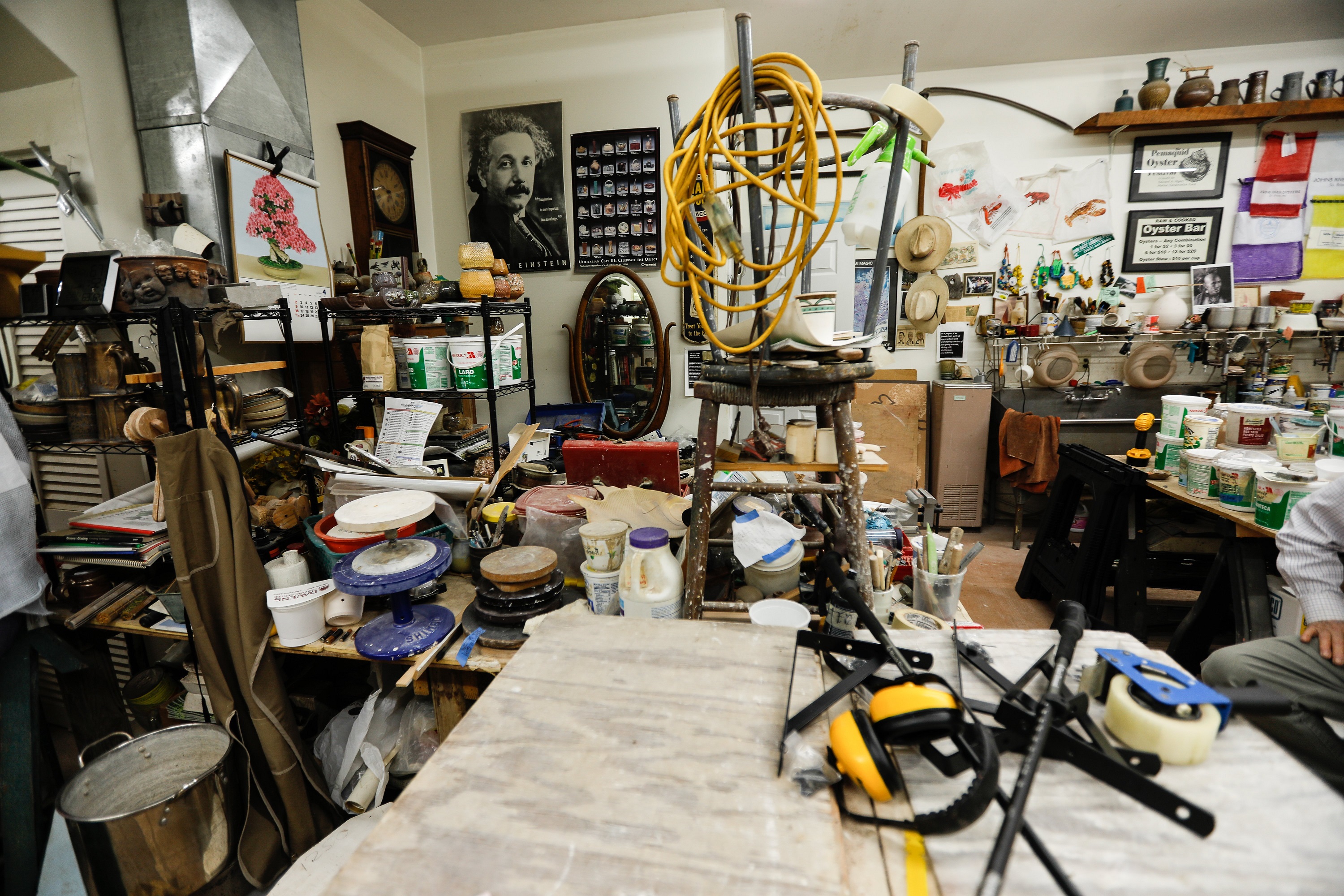What makes a house a home? Well, that depends on whom you ask. So we retooled the question and narrowed the scope:
"What makes your home an artist's home?" we asked a few local visual artists. "Is it simply the fact that an artist lives there? Is it the decorative, original art that hangs on the walls? Or the functional art you make or collect - ceramic dinnerware; wooden serving pieces; hand-woven rugs; dyed silk clothing - that you press into service day in and day out? Is it the home itself, made artistic by architectural design flourishes or decorating choices?"
And, since we already had their ear, we went ahead and asked them for their best decorating advice. For no matter what you believe elevates a house to a home, it comes down to what's inside.
Beverly Hayden is a photographer and mixed-media artist who has literally filled her house with art.
"Certainly it's on the walls," she says, "but it also hangs over doorways, above the faucets of my bathroom sinks, in the little narrow crevices between doorframes, or between the doorframe and a corner. Five inches of space? I have the perfect piece to go there! I even have an art quilt on a slanted gable ceiling/wall in my library.
"I eat on artist-made pottery and drink from hand-blown wine glasses. Art is literally a part of the way I live my life."
Her collection is that of a lifetime. Hayden used to used to buy the largest suitcases she could find and pack them full of "treasures" from her travels. But no longer.
"I'm running out of spaces to put things," she says. "If I become smitten with a new piece, though, I'll make room."
In addition to buying art overseas, Hayden also has a great deal of art created by friends and acquaintances.
"These create a sort of eclectic tapestry of energy," she says. "One friend described my house as having a personality all its own, separate from me, because of the art. I think, more than anything else, it is art that makes a home an 'artist's home,' and thinking about how you can incorporate art into all aspects of the way you utilize your space."
As for the house itself, finding one that "ticked all the boxes" wasn't easy. It had to be within 10 minutes of downtown. It couldn't be on a busy road. Because Hayden is drawn to the style of houses built between the 1880s and the 1930s, it had to contain "unique features preferably Craftsman style." It had to be large enough for entertaining, with studio space in the form of a large basement or garage. It had to have a dedicated guest room for her cat sitters, who stay over during her busy show season or when she's otherwise traveling. And it had to be within her budget.
"My current house, where I've lived for eight years, rather unbelievably ticked every one of these boxes. I made an offer the day I first saw it," she says.
What doesn't she love?
"There are stairs everywhere in this house! In all, five sets of staircases, three of which were squished into spaces shorter than they should be due to conversions of attics to living spaces, and therefore are too steep and have tread widths that are too narrow. I've been brainstorming ways for years to add an elevator," Hayden says, laughing.
Regarding design advice to others, she suggests visiting art festivals and talking to the artists themselves. "See what strikes your fancy" - and don't get hung up on matching what you already have going on, says Hayden. "Trust your instincts. As your collection grows, the more eclectic your pieces are, the more they will create that unique tapestry of 'you-ness' throughout your space."
Julie Haley Clark is a blacksmith who works from her home studio on Lookout Mountain, Georgia. In addition to shoeing her own horses, she also turns her tools to forging organic-looking iron sculptures, tables and other functional, as well as purely decorative, items.
Not surprisingly, perhaps, she physically helped build the house she and her husband, Bruz, live in. What makes her home an artist's home, she says, is the fact that it was built from top to bottom by craftsmen.
"Most of the things we created in the construction of our home were for a defined purpose, rather than just for the beauty of art," says Clark. Sometimes a purposeful creation turned out to also be artistic, she says, "but I would leave that up to the viewer."
The home had a previous life with a couple Clark describes as surrogate grandparents.
"Frank Baisden was a well-known artist in the area and started the art school at UTC. After he and his wife Kay passed away, Bruz and I bought their fabulous little cottage on the brow. Unfortunately, it had been unoccupied for 10 years and was beyond saving. We removed what we could, had the structure torn down, and built our house in the footprint of their home, utilizing the large mountain stone fireplace and chimney."
The process took her and Bruz - with a little help from friends, parents and one of Julie's brothers - five years, working only on weekends, holidays and vacation time. Until move-in time, they lived in a 900-square-foot barn on her parents' property - living space on one side, horses on the other.
"Alongside of us every step of the way was a young architect, Taylor Bowers, and my mom, Julie Hailey," Clark says. "They came out every Saturday during those five years, and for two more years following, when we built my blacksmithing shop. Taylor, Bruz and I were the perfect team. Each brought a different set of skills to the long-term project. All three of us knew how to use all the tools and equipment, and some things we just learned as we went along."
They purchased most of the materials for the hybrid timber frame/post-and-beam house and workshop from people they knew, who in turn pitched in to help with putting the materials into play.
Perhaps it was the group effort, the collage of people and skills brought to bear upon the construction of the house, that combined to make it an "artist's home." Or perhaps it's the fact that, as Clark says, "Every single thing in our home has meaning. Bruz made our dining table, two side tables and bookcases, and I forged the coffee table, fire screen, end tables, entrance lights and bedside table. Most all of our furniture and rugs belonged to my grandmother, great-grandfather and other relatives."
Her home design advice to others is to "build small and get on with your life." Where decorating is concerned, she advises avoiding drywall and carpet. "Go with other wall material and rugs. My chest of drawers in our bedroom is a red 16-drawer Milwaukee mechanic toolbox on wheels. All of our kitchen items are kept in two stainless mechanic's toolboxes. Best use of space anywhere!"
Cam Busch is first and foremost a photographer, but she also enjoys drawing, multimedia collage, and portrait work. She has been making and collecting art for 50 years.
"My collection consists of paintings, printmaking, drawings, multimedia assemblages, collages, photography, woodworking, ceramics and sculpture created by local, regional, national and international artists," she says. "I hang the art 'salon style,' meaning from the top of the walls to the bottom.
"I feel like I live in an art gallery, and just love the positive energy I get from the art."
Busch chose her home in Lookout Valley for its high ceilings, open spaces and windows. "Since I live on a golf course, the backyard views from my windows give the illusion of an expansive yard. The views of nature are peaceful, comforting and healing," she says.
Her home serves many functions. Along with housing her personal art gallery, there is also an office/studio and a prayer room.
"The walls in the prayer room contain meditative photography of mine from the pilgrimages I have been on over the years to Ireland, Scotland, England, Spain, France, Italy, Russia and China," says Busch, who uses the room for quiet reflection and for monthly gatherings.
Meanwhile, the office where she practices art therapy, career counseling, and art therapy supervision and mentoring has art on the walls meant to stimulate her clients' creative imagination.
"My favorite thing about my home is that I am surrounded by art of all kinds," Busch says. "In the mornings, I love walking into my living room with a cup of coffee and gazing at the art created by my fellow artist friends, professors from the UTC art department, professional colleagues and board members. My home is my sanctuary, but I also enjoy sharing it with my family, friends and loved ones."
If she could give one piece of home design/decorating advice to others, it is to, "Collect art that inspires you. Notice if you tend to seek pieces with vibrancy and color, or images that have soft tones and are reflective and soothing. Let each room in your home reflect an atmosphere that is personal and creative."
And by all means, she says, because the way art is hung also has an impact, "Hire a professional installer to hang larger works and collections of items."
Kerrick Johnson is a glassblower and cold worker and wife Keith is an interior designer and contractor. They moved from the Southside to the side of Lookout Mountain so their 9-year-old son, Hooke, could have a yard.
They built their new home atop a concrete bunker that serves as Kerrick's glass studio and workshop. Aside from working in glass, Kerrick and Keith also work together designing and building custom homes for clients.
"Kerrick is a master, as many artists are, at seeing the possibilities, whether it's in a lump of glass or someone's home," says Keith. "And I am a designer. So we drew what we wanted and built it: a home with cross-functional spaces and lots of outdoor space. We wanted big picture windows to frame the views, energy efficiency, big steel stairs, and a big studio space for Kerrick."
They also chose to create physical office space within the house.
"It's hard enough to stop working when you work from home, so we created dedicated office/creative spaces where we can close the doors at the end of the day," Keith says.
Their favorite thing about their home, they both agree, are the views of nature.
"It's almost like we live outside, and after being in the city for so long, we love that," Keith says. "Our least favorite thing is the vertical driveway to get up to our house, and then all the steps to get into the house. But once you are inside, it's a treehouse!"
As far as her design advice goes, "Don't be afraid to change," she says. "Our house is our studio, our lab, our living experiment. We do life here, and all the wonder and mess that comes with that.
"Paint a room, change a light fixture, buy throw pillows and art - the changes don't have to be big or even expensive to make a huge difference."
Local potter Mark Issenberg's idea of what makes his Lookout Mountain, Georgia, home an artist's home is "an organized disorder that (life partner) Nona tries to keep under control," he says. "I'm growing plants in the house, the overflow from my greenhouse. There's lots of pottery; mine and favorite pieces from other potters.
"The house is functional and comfortable, but not like something you'd see in a magazine layout. There are plenty of windows, through which to see the mountains, Johnson's Crook and the gardens that Nona and I have planted over the years."
Nature, he says, gives him focus - much like sitting at his pottery wheel.
Issenberg has had a long-term relationship with Lookout Mountain.
"I apprenticed with the potter Charles Counts up here when I was 18 and fell in love with the mountain," he says. "I continued to live and work in Miami as a firefighter, but would come up here and camp or stay with friends whenever I could."
When Issenberg was getting ready to retire, a friend called to tell him the property where he now lives was for sale, and he bought it.
"There was an old summer home from the 1930s that I lived in for a year," Issenberg says. "No insulation. Dark and freezing cold in the winter. The worst! I built my studio and gallery down the driveway and moved into the apartment above the studio while we tore down the old house. I kept the fireplace that was built by a local husband and wife, Buff and Ann Bradford, and built a comfortable home full of light."
As for his best design advice? "Fill your home with artists' work that appeals to you, not something you buy at the furniture store. If you do this, the pleasure of seeing it will not fade."
